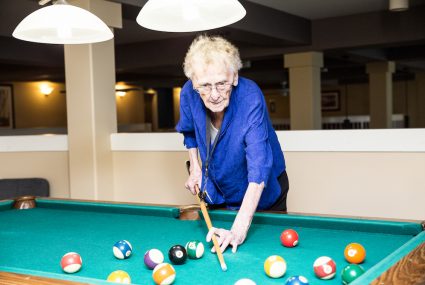As we age, it’s normal to see your hand-eye coordination start to decline. It’s a problem experienced by many seniors, though it’s not always obvious. In most cases, it is a very gradual change and it may take some time to recognize what is happening.
One study took two groups of people, one aged 20-36 years old and the other aged 67-87 years old and tested their hand-eye coordination with a simple test. Participants were asked to point to a target 100 times in a row. After the results of the two groups were compared, researchers concluded that these motor skills do decline with age.
Reduced hand-eye coordination can be caused by a number of things, but is most often associated with changes in vision and reduced function in certain parts of the brain. Hand-eye coordination is something we can measure it in terms of speed and accuracy, so it can be diagnosed by a series of tests, which may include asking you to follow an object with your eyes or getting you to touch your nose with your finger. Further medical tests may be required, such as an MRI or other neurological tests.
Why is Hand-Eye Coordination is Important?
Hand-eye coordination isn’t only important for sports. It plays a very important role in everyday life. We use it all the time; when we eat, exercise, write, or clean. It’s involved in just about anything we do with our hands on a daily basis. The breakdown of hand-eye coordination happens when our hands can’t properly perform the actions our brain tells us to do.
However, it’s not only a problem with tasks that just require our hands. When our reaction time is slowed down, this can cause other problems too. The biggest concern with reduced hand-eye coordination is the increased risk of falls, as your hands might not be able to reach out quickly enough to steady yourself if you lose your balance. It’s an issue for your feet too, and motion in general.
If you notice that your hand-eye coordination is beginning to decline, there are some simple ways to practice that can make it easier to perform your everyday tasks.
Use both hands
When you brush your teeth or eat a meal, try to use both hands at once. This can steady your hands and exercise better control during activities in which you might feel a bit shaky.
Play ball
Don’t worry, this doesn’t necessarily mean you have to actually hit the playing field! Really, all you need to do is play a gentle game of catch with a softball while sitting or standing. If you want to practice this solo, you can grab a ball and practice bouncing it on the floor or against a wall and catching it. It requires you to focus on your reaction time and can keep your brain sharp.
Get creative
Another great way to work on your hand-eye coordination is to do some creative work. Activities like painting and drawing are great for this since they require concentration on fine detail work. Writing is also great, whether you choose to practice printing or cursive script. Of course, any type of craft project is a great way to get your brain and your hands to work together. (Plus, it’s fun!)
Get moving
Exercise is an important part of maintaining coordination. Balance exercises are great for when you need to work on coordination between your eyes, hands, and feet. Agility exercises are also a great way to improve reaction time. If you want to start exercising, it’s a good idea to join a class or work with a trainer, so you make sure you maintain proper form and don’t overdo it.
At Bria Communities, we encourage our residents to maintain active lifestyles. There are always plenty of opportunities to get moving, whether it’s taking part in an exercise class, dancing at a social event, or working out in the fitness room. There are also many other ways for residents to improve their hand-eye coordination through art classes, crafts, and more.

Comments